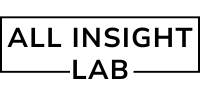Introduction
Is React Still a Good Career Bet in 2026? React, the popular JavaScript library developed by Facebook (now Meta), has been a cornerstone of modern frontend development for over a decade. It powers everything from simple web interfaces to complex single-page applications used by companies like Instagram, Airbnb, and Netflix. But with the ever-evolving tech landscape, one question remains: Is React still a good career bet in 2026? This blog explores React’s current standing, trends shaping its future, and why it remains a valuable skill for developers.
Table of Contents
React’s Longevity and Ecosystem
React’s dominance in the frontend space is largely due to its component-based architecture, reusable UI elements, and the vibrant community that supports it. In 2026, it remains a stable, mature, and widely-used tool in production environments. Key contributors continue to update the framework, ensuring compatibility with new web standards, performance optimizations, and developer-friendly tooling.
React is not just a library; it’s a gateway into an ecosystem that includes:
- React Native for mobile development
- Next.js for server-side rendering
- Remix and Gatsby for modern web applications
- Redux, Recoil, Zustand for state management
Whether you’re building internal tools, marketing websites, or scalable SaaS platforms, React remains highly adaptable.
Job Market and Demand
According to Stack Overflow’s 2025 Developer Survey, React ranks among the top three most-used web frameworks. Job platforms like LinkedIn and Indeed list React expertise as one of the most sought-after frontend skills, often combined with knowledge of TypeScript, Redux, or Next.js.
React jobs span across industries:
- Startups looking for rapid prototyping
- Enterprises investing in frontend modernization
- Freelance/Contract markets for React-based projects
This consistent demand ensures that React developers remain highly employable in 2026.
Learning Curve and Accessibility
One of React’s greatest strengths is its approachable learning curve. New developers can start building components with just HTML, CSS, and JavaScript knowledge. With platforms like freeCodeCamp and Codecademy, learners can begin building real-world projects within weeks.
Moreover, the wealth of community resources, YouTube tutorials, and blogs makes React more accessible than ever.
Integration with Modern Tooling
Modern React integrates seamlessly with tools like:
- Vite and Webpack for bundling
- Tailwind CSS and Material UI for styling
- React Query and Axios for data fetching
- Jest and Testing Library for testing
This compatibility makes React a productive choice when paired with industry-standard tools and frameworks, offering both flexibility and speed.
Evolution of React in 2026
In 2026, React continues to evolve with advanced features such as:
- React Server Components: Optimize server-side rendering with reduced bundle sizes.
- Concurrent Features: Enhance responsiveness with better scheduling.
- Hooks and Context APIs: Simplify logic reuse and state management.
These advancements future-proof React by aligning with the performance and scalability requirements of modern web applications.
Community and Support
The strength of React lies not only in its capabilities but in its active global community. Conferences like React Conf, JSConf, and regional meetups contribute to a collaborative learning environment. Open-source contributors actively develop tools and libraries that extend React’s functionality.
GitHub repositories for React and its ecosystem tools continue to receive regular updates and engagement.
React vs. The Competition
While frameworks like Svelte, SolidJS, and Vue.js have grown in popularity, React still offers unmatched flexibility, job availability, and learning resources. Many newer frameworks adopt patterns inspired by React, affirming its influence.
Furthermore, enterprise adoption of React means companies are less likely to shift to niche frameworks without long-term community backing.
Conclusion
So, is React still a good career bet in 2026?
Absolutely.
React’s stability, widespread use, vast job market, and continual evolution make it a wise investment for new and experienced developers alike. Whether you’re building your first portfolio or working on enterprise-grade apps, React remains one of the best tools in the frontend developer’s toolkit.
If you’re looking to stay relevant, marketable, and productive in your web development career, React in 2026 is not just a good bet—it’s a winning one.
Helpful Resources
Find more React content at: https://allinsightlab.com/category/software-development

